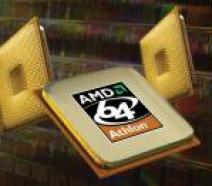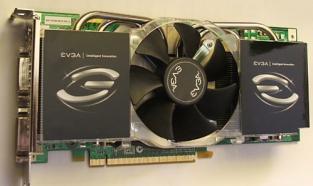OOPS! You forgot to upload swfobject.js ! You must upload this file for your form to work.
Elpida released 30 nm DDR3
![]()
|
xtreview is your : Video card - cpu - memory - Hard drive - power supply unit source |
|
|||
|
|
||||
 Recommended : Free unlimited image hosting with image editor
Recommended : Free unlimited image hosting with image editor
|
POSTER: computer news || ELPIDA RELEASED 30 NM DDR3 |
DATE:2010-09-30 |
|
|
Memory producers try in proper time to transfer production to the more progressive lithographic technical processes in order to reduce energy consumption and prime production cost . The Japanese company elpida yesterday reported the completion of pre-production of two-gigabit microcircuits memory type DDR3 on 30 nm technology. In comparison with the produced on 40 nm technical process memory, the new generation of microcircuits occupies on the silicic plate up to 45% less place. Furthermore, it consumes up to 15% less electric power under load, and up to 10% less in the standby mode. Epida plans to use this memory in the mobile segment. The deliveries of models on 30 nm memory will begin during December this year, at the same time starts mass production. Related Products : | ||
|
|
||
|
xtreview is your : Video card - cpu - memory - Hard drive - power supply unit source |
|
|
|
|
||
|
Xtreview Support  N-Post:xxxx Xtreview Support        |
ELPIDA RELEASED 30 NM DDR3 |
| Please Feel Free to write any Comment; Thanks  |
This year will not be released more than 45 million motherboards (2017-09-08)
AMD itself would like to believe that mobile processors Ryzen have already been released (2017-09-08)
Lenovo released Android-smartphone K8 (2017-09-07)
Compact systems Intel NUC based on Coffee Lake will be released in the second quarter of 2018 (2017-09-05)
Samsung has released an Android-smartphone Galaxy J7 plus with a dual camera (2017-09-04)
Six-core processors Intel Coffee Lake should be released in October (2017-08-22)
Ubisoft released a five-hour demo of Tom Clancys Ghost Recon Wildlands (2017-08-04)
The overclocked version of Tesla Model 3 will be released next year (2017-07-31)
IPhone SE 2 will be released in August, and iPhone 8 in October (2017-07-24)
Addition Alexander for the iOS-version Rome Total War will be released this week (2017-07-24)
For the original Half-Life was released an official patch (2017-07-11)
StarCraft Remastered will be released in mid-August (2017-06-30)
Part of the MediaTek processors will be released on the GlobalFoundries (2017-06-27)
Accelerators of Radeon Instinct MI25 calculations based on AMD Vega 10 will be released in the third quarter (2017-06-21)
Return of the Necromancer for Diablo III will be released next week (2017-06-21)
LG V30 with OLED-display and Snapdragon 835 will be released in August (2017-06-21)
Samsung Galaxy Note FE will be released at the end of July (2017-06-15)
Ready-made systems based on AMD Ryzen Threadripper will be released in late July (2017-06-14)
Age of Empires Definitive Edition will be released this year (2017-06-13)
Intel Ice Lake processors are unlikely to be released before 2019 (2017-06-13)
![]()
To figure out your best laptops .Welcome to XTreview.com. Here u can find a complete computer hardware guide and laptop rating .More than 500 reviews of modern PC to understand the basic architecture


7600gt review
7600gt is the middle card range.
We already benchmarked this video card and found that ...

 geforce 8800gtx and 8800gts
geforce 8800gtx and 8800gts  Xtreview software download Section
Xtreview software download Section  AMD TURION 64 X2 REVIEW
AMD TURION 64 X2 REVIEW  INTEL PENTIUM D 920 , INTEL PENTIUM D 930
INTEL PENTIUM D 920 , INTEL PENTIUM D 930  6800XT REVIEW
6800XT REVIEW  computer hardware REVIEW
computer hardware REVIEW  INTEL CONROE CORE DUO 2 REVIEW VS AMD AM2
INTEL CONROE CORE DUO 2 REVIEW VS AMD AM2  INTEL PENTIUM D 805 INTEL D805
INTEL PENTIUM D 805 INTEL D805  Free desktop wallpaper
Free desktop wallpaper  online fighting game
online fighting game  Xtreview price comparison center
Xtreview price comparison center Lastest 15 Reviews


Rss Feeds
Important: It appears that you are using AdBlocking software.
This site is supported by advertising revenue. If you are reading this site without the accompanying advertisments, you are harming the owner who provides this information at significant expense. You may, without your knowledge, have software on your computer that deletes ads. Or, if you have installed AdBlocking software, you should know that it may block much more than banner ads, rendering some sites unusable.
Click here to close this notice.
You will not receive it again during this session (cookies required.)
You will not receive it again during this session (cookies required.)
Last News
- The new version of GPU-Z finally kills the belief in the miracle of Vega transformation
- The motherboard manufacturer confirms the characteristics of the processors Coffee Lake
- We are looking for copper coolers on NVIDIA Volta computing accelerators
- Unofficially about Intels plans to release 300-series chipset
- The Japanese representation of AMD offered monetary compensation to the first buyers of Ryzen Threadripper
- This year will not be released more than 45 million motherboards
- TSMC denies the presentation of charges from the antimonopoly authorities
- Radeon RX Vega 64 at frequencies 1802-1000 MHz updated the record GPUPI 1B
- AMD itself would like to believe that mobile processors Ryzen have already been released
- AMD Vega 20 will find application in accelerating computations
- Pre-orders for new iPhone start next week
- Radeon RX Vega 57, 58 and 59: the wonders of transformation
- ASML starts commercial delivery of EUV-scanners
- The older Skylake processors with a free multiplier are removed from production
- Meizu will release Android-smartphone based on Helio P40
- AMD Bristol Ridge processors are also available in American retail
- The fate of Toshiba Memory can be solved to the next environment
- duo GeForce GTX 1080 Ti in GPUPI 1B at frequencies of 2480-10320 MHz
- New Kentsfield overclocking record up to 5204 MHz
- Lenovo released Android-smartphone K8

HALO 3 HALO 3 - Final Fight!

PREY Prey is something you don t often see anymore: a totally unigue shooter experience.

computer news computer parts review Old Forum Downloads New Forum Login Join Articles terms Hardware blog Sitemap Get Freebies


